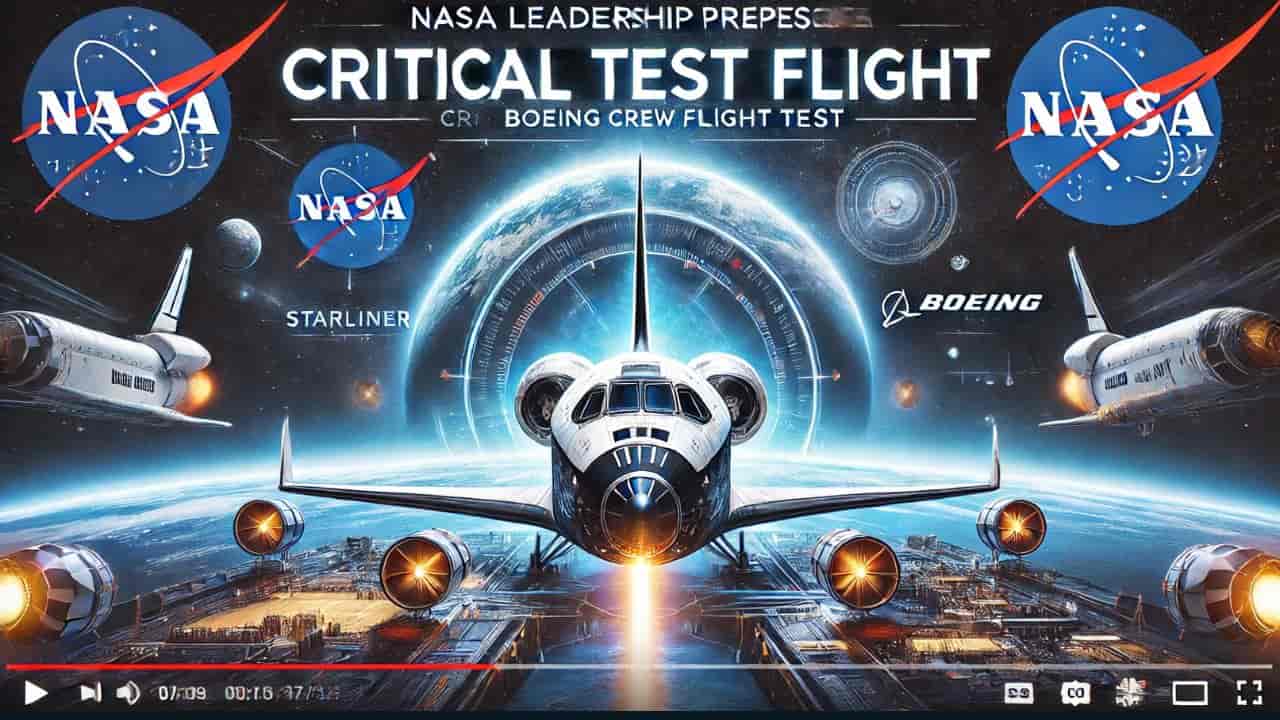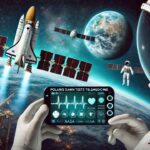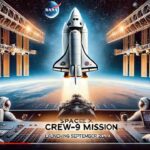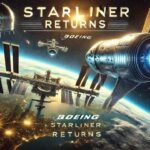NASA, Boeing Crew Flight Test, Starliner spacecraft, Commercial Crew Program, NASA Johnson Space Center, space exploration, low Earth orbit, human spaceflight, Test Flight Readiness Review
Explore NASA’s preparation for the Boeing Crew Flight Test, a key milestone in human spaceflight under the Commercial Crew Program. Discover how NASA and Boeing are ensuring mission success through rigorous data analysis and safety reviews, and learn about the mission’s significance for the future of space exploration.
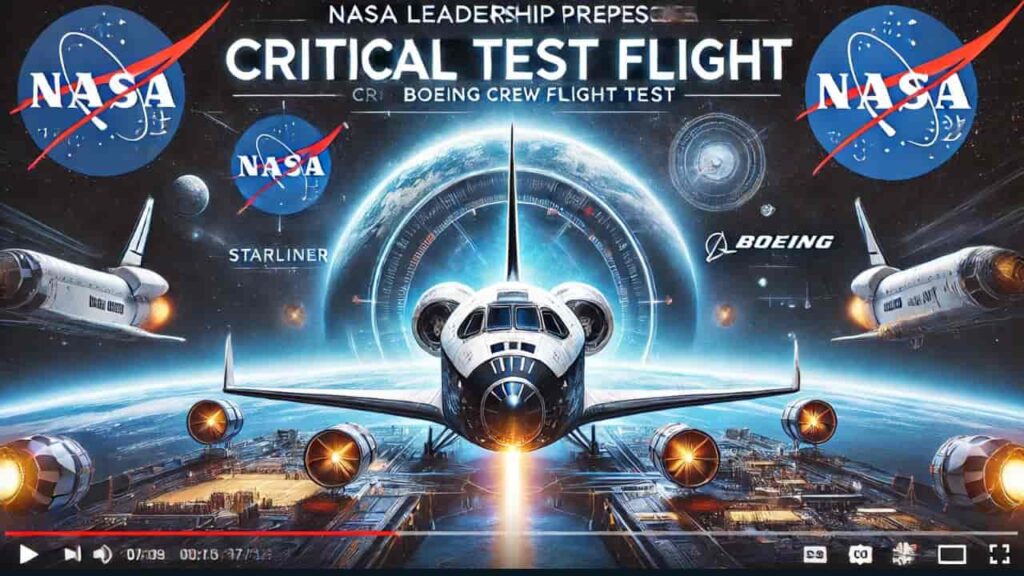
Leadership to Discuss NASA’s Boeing Crew Flight Test: A Comprehensive Overview
NASA’s journey towards deep space exploration and the continued expansion of human presence in low Earth orbit have been milestones of global significance. Among these endeavors, the Boeing Crew Flight Test (CFT) represents a crucial step. NASA’s collaboration with Boeing under the Commercial Crew Program (CCP) seeks to advance human spaceflight capabilities, paving the way for broader access to space for both scientific research and commercial opportunities.
On August 24, NASA Administrator Bill Nelson and other top leadership will conduct an internal Agency Test Flight Readiness Review (TFRR) for the Boeing CFT. This review is a critical checkpoint to ensure that all systems and processes are in place for the upcoming crewed mission. Following this internal review, NASA will host a live news conference at 1 p.m. EDT from the Johnson Space Center in Houston, which will be broadcasted on multiple platforms including NASA Television, the NASA app, YouTube, and the agency’s website. This event signifies the transparency and public engagement NASA is committed to, as the world watches these crucial steps towards advancing human spaceflight.
The Significance of the Boeing Crew Flight Test
The Boeing Crew Flight Test is not just another mission; it is a comprehensive, end-to-end test of the Starliner spacecraft, developed by Boeing as part of NASA’s Commercial Crew Program. This mission is designed to demonstrate the spacecraft’s ability to safely carry astronauts to and from the International Space Station (ISS). The successful execution of this mission would mark a significant milestone in NASA’s efforts to certify new spacecraft for human spaceflight, a critical capability as the agency works to maintain and expand human presence in low Earth orbit.
Preparing for the Test Flight: Data Collection and Analysis
In the lead-up to the August 24 readiness review, NASA and Boeing have been meticulously gathering and analyzing data related to the Starliner spacecraft’s propulsion and helium systems. These systems are vital for the safe and efficient operation of the spacecraft, and any issues within these systems could pose significant risks to the mission. By collecting extensive data both in space and on the ground, the teams aim to gain a comprehensive understanding of the technical challenges and potential risks associated with these systems.
The internal review will provide NASA leadership with a mission status update, a review of the technical data collected, and an evaluation of the closeout actions taken to address any identified issues. Additionally, the review will include the certification of the flight rationale, which is a critical step in determining whether the mission can proceed as planned. This thorough and rigorous process underscores NASA’s commitment to safety and mission success.
The Role of the Commercial Crew Program
The Boeing Crew Flight Test is part of NASA’s broader Commercial Crew Program, an initiative that represents a new era in human spaceflight. Launched in 2010, the program was designed to foster partnerships between NASA and American private industry, with the goal of developing safe, reliable, and cost-effective crew transportation systems to low Earth orbit and the ISS.
The program has already seen significant success, most notably with SpaceX’s Crew Dragon spacecraft, which has completed several crewed missions to the ISS. The addition of Boeing’s Starliner to the program would further enhance NASA’s ability to maintain a continuous U.S. presence on the ISS, reduce reliance on international partners for crew transportation, and open new opportunities for scientific research and commercial activities in space.
The Journey So Far: A Look Back at the Starliner Program
The road to the Boeing Crew Flight Test has been long and challenging, marked by both achievements and setbacks. The Starliner spacecraft was initially developed under NASA’s Commercial Crew Integrated Capability (CCiCap) initiative, with the goal of creating a new human-rated spacecraft capable of ferrying astronauts to and from the ISS.
The spacecraft’s first uncrewed test flight, Orbital Flight Test-1 (OFT-1), was launched in December 2019. While the mission successfully launched and returned to Earth, it encountered several technical issues that prevented it from reaching the ISS. These issues included software errors and communication problems, which prompted a thorough review and a series of corrective actions by Boeing and NASA.
In response to these challenges, NASA and Boeing conducted a second uncrewed test flight, Orbital Flight Test-2 (OFT-2), in May 2022. This mission successfully demonstrated the Starliner’s ability to autonomously dock with the ISS and return to Earth, addressing many of the issues identified during OFT-1. The success of OFT-2 paved the way for the upcoming crewed flight test, which will be the final major milestone before the spacecraft is certified for regular crewed missions.
What’s at Stake: The Importance of the Test Flight Readiness Review
The Test Flight Readiness Review scheduled for August 24 is a crucial step in ensuring the success of the Boeing Crew Flight Test. During this review, NASA leadership will assess the readiness of all systems, personnel, and processes involved in the mission. This includes a detailed evaluation of the spacecraft’s propulsion and helium systems, as well as a review of the mission’s overall risk posture.
One of the key outcomes of the review will be the certification of the flight rationale, which essentially provides the final “go” or “no-go” decision for the mission. This decision will be based on a comprehensive analysis of the technical data, mission objectives, and potential risks. If the review identifies any significant issues, NASA may decide to delay the mission until these issues can be resolved.
Looking Ahead: The Future of Human Spaceflight
The Boeing Crew Flight Test is more than just a single mission; it represents a critical step forward in NASA’s efforts to expand human spaceflight capabilities. By successfully demonstrating the Starliner’s ability to safely transport astronauts to and from the ISS, NASA will be one step closer to achieving its long-term goals of sustainable exploration beyond low Earth orbit.
The success of this mission would not only enhance NASA’s ability to maintain a continuous human presence on the ISS but also open new opportunities for scientific research and commercial activities in space. As the agency looks ahead to future missions to the Moon, Mars, and beyond, the lessons learned from the Boeing Crew Flight Test will play a crucial role in shaping the future of human space exploration.
Engaging the Public: NASA’s Commitment to Transparency
NASA has long recognized the importance of public engagement and transparency in its missions. The live news conference scheduled for August 24 is part of the agency’s ongoing efforts to keep the public informed about its activities and milestones. By broadcasting the event on multiple platforms, including NASA Television, the NASA app, YouTube, and the agency’s website, NASA is ensuring that people around the world can follow the progress of this critical mission.
In addition to the live broadcast, NASA has provided detailed instructions for media interested in attending the news conference or participating by phone. This includes a requirement for media to RSVP no later than one hour before the start of the event, underscoring the agency’s commitment to facilitating media coverage of its activities.
Conclusion: A Milestone for NASA and Boeing
The Boeing Crew Flight Test represents a pivotal moment in NASA’s Commercial Crew Program and the broader efforts to expand human spaceflight capabilities. As NASA leadership prepares for the August 24 Test Flight Readiness Review, the agency’s commitment to safety, mission success, and public engagement is more evident than ever.
Through meticulous data collection, rigorous analysis, and a transparent review process, NASA and Boeing are working to ensure that the Starliner spacecraft is ready for its upcoming crewed mission. The outcome of this mission will have far-reaching implications for the future of human spaceflight, paving the way for new opportunities in low Earth orbit and beyond.
As the world watches and waits, the Boeing Crew Flight Test stands as a testament to what can be achieved through collaboration, innovation, and an unwavering commitment to exploration.
Read More
- NASA and Sierra Space Dream Chaser Arrives in Florida for Launch Prep
- NASA Citizen Scientists Discover Hypervelocity Star Escaping Milky Way at 1 Million MPH
- NASA Invites Media to Northrop Grumman 21st Station Resupply Launch
- Unveiling the Mysteries of Jupiter’s Moon: NASA Europa Clipper Mission
